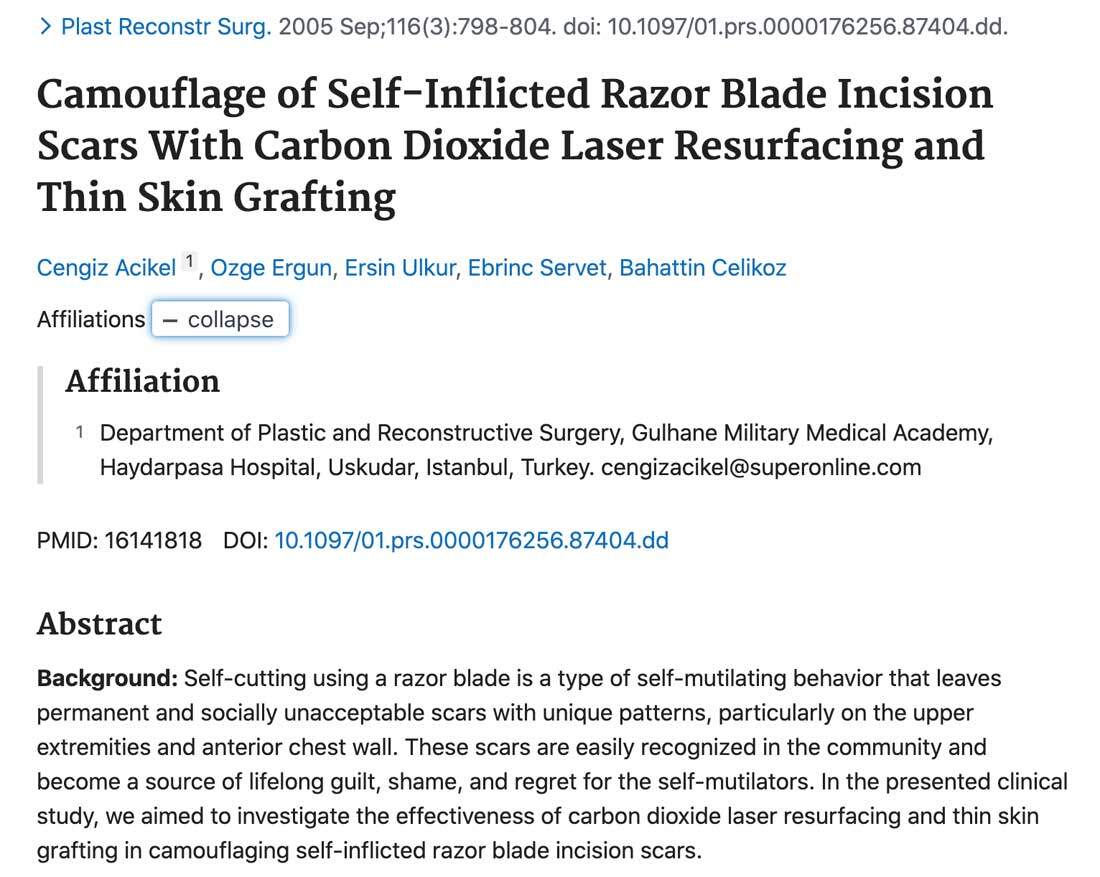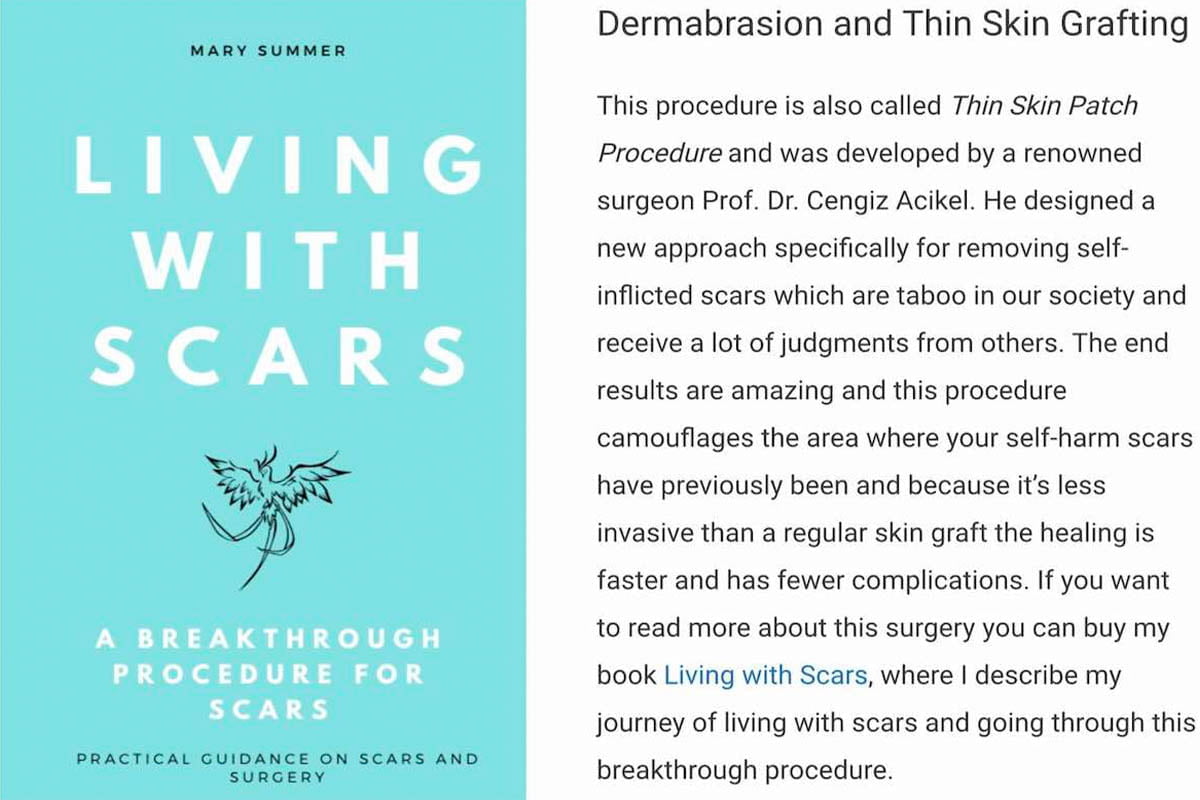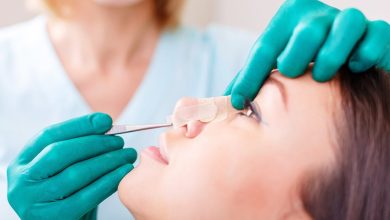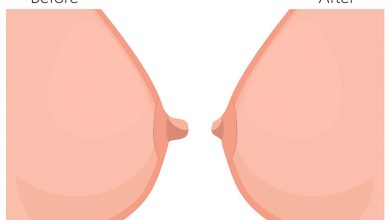Self-Harm Scar – Self Inflicted Scar Treatment 2024
What Is Self-Harm Scar Treatment?
You can read the explanations below to learn more about self-harm scars, also known by various names such as self-inflicted scars, self-mutilation scars, self-inflicted razor blade incision scars, self-cutting scars, self-injury scars, which have many distinct characteristics; and to know about the treatment options for these scars and my experience in this field.
I’d like to state that I’ve been particularly interested in this field since 2003, and that I’ve been successfully performing my own surgical technique “dermabrasion and thin skin patch” (dermabrasion and thin skin grafting) for years. Our clinical study on this subject appeared in the medical literature in 2005, by being published in the US Journal of Plastic and Reconstructive Surgery (Official Journal of American Society of Plastic Surgeons, ASPS).
There could be a variety of underlying reasons for making cuts on one’s own body with cutting tools such as razors. It can appear as a simple show of courage among friends, or as an expression of serious psychiatric problems.
It is seen not only in our society, but also in societies from all cultures around the world, and in individuals of all socioeconomic levels.
- Self-harm scars in the community are more common than thought. The overall lifetime prevalence of self-harm is 4% in the USA. When searching the terms “self-harm scars” or “self-inflicted scars” on the Internet, it can be seen that many books and forum sites have been created on this subject.
- Self-harm scars are more common in adolescence, particularly in females.
- Incision scars made on the skin with cutting tools such as razors are permanent for life.
- Incision scars have a distinct appearance that people can easily identify.
- Many people have prejudices against people who bear such scars on their bodies. These scars are not socially acceptable like a burn scars.
- Most people feel the need to conceal their scars from the public eye. This has an extremely negative impact on one’s quality of life. Wearing short-sleeved clothes, participating in sports, wearing summer clothes or uniforms at work, and being in environments such as the beach and pools are all sources of unease for a person with self-harm scars on his/her arms.
- When such people become parents, they do not want their children to see their scars, as they are afraid of setting a wrong example for them.
- When they apply for some professions, they end up being rejected due their self-harm scars.
- Problems may be encountered and relationships may be broken off as a result of prejudices caused by self-harm scars in the dating and marriage phases.
- People who have psychologically recovered after having left behind the problematic period, when they made the incision scars, are in search of a way to get rid of their scars and start over with a clean slate.
When the treatment of self-harm scars is searched on the Internet, a wide variety of treatment options are displayed. Unfortunately, the vast majority of these treatment options lack scientific foundations and intended to exploit desperate people seeking treatment, market to them, and profit from them. This situation reminds me of the proverb “A drowning man will clutch at a straw”.
Features of Self-Inflicted Razor Blade Incision Scars
- Self-cutting scars have a distinct appearance and are usually multiple and side by side.
- Healing of a skin incision occurs through the synthesis of connective tissue rather than the original tissue. As a result, self-harm scars draw the attention their color, which differs from the color of the surrounding skin.
- Since the connective tissue has no hair follicles and sebaceous glands, hair does not grow in such scar tissues. If self-harm scars are in a hairy area such as the dorsal side of the forearm, they also attract attention with their hairless appearance.
- Self-harm scars can sometimes develop into hypertrophic scars or keloids, which are raised scars with stiffness and redness.
- The depth of self-harm scars on the skin usually involves a full layer, so procedures that remove the top layer of the skin alone (laser, ice therapy, dermabrasion, chemical peeling) cannot remove the scars. Many methods claimed to treat self-harm scars are actually not effective and result in delay in treatment and waste of money.
Treatment of Self Harm Scars With the “Dermabrasion and Thin Skin Patch Procedure”
- The procedure developed by Professor Cengiz Açıkel, MD, et al., for the treatment of self-harm scars appeared in the medical literature in 2005, by being published in the US Journal of Plastic and Reconstructive Surgery (Official Journal of American Society of Plastic Surgeons, ASPS).
- Purpose of the procedure: Changing the typical appearance of self-harm scars, so that they look like less noticeable, socially acceptable scars, such as burn scars.
- Procedure: This surgical treatment procedure defined as “repair with dermabrasion and thin skin patch” does not aim at completely removing self-harm scars; instead, it is intended to conceal such scars by performing dermabrasion on the entire scarred area, thinning large scars, and applying a skin patch (graft) to the dermabraded raw surface.
In Which Part Of The Body Can Self-Harm Scars Be Treated?
- The scars treated primarily are those between the shoulder and the wrist.
- The treatable scars are those limited to a small area on the anterior chest wall and thighs.
- In my practice, I don’t perform this procedure to treat scars on the hands, face, neck, abdomen and legs.
Characteristics of Candidates Who are Suitable for this Procedure
- Those who are currently in good physical and mental health.
- Those who want to be treated of their own free will when they are not under the influence of social or parental pressure.
- Those who have realistic expectations from the surgery; that is, those who do not expect the scarred area to completely regain its normal appearance.
- Those who are aware that the recovery, normalization, and finalization of the surgical fields may take up to two years in the postoperative period and those who are mature enough to show the required patience.
Age Limit for the Procedure and Timing
- One of the most important factors in the timing of the surgery is when the individual has left behind the psychology of self-harm. The priority in treatment is to seek professional psychological help. After achieving mental stability, the treatment of the self-harm scars should become a current issue.
- It makes no difference whether the self-harm scars are fresh or old because the area will be treated with the dermabrasion and thin skin patch procedure, and then a new wound healing process will start.
- There is no specific age limit. In cases where the person is under18 years of age, the treatment procedure can be performed in line with the opinions of the person, his or her parents, and a psychiatrist.
Before Surgery
- Taking blood thinners such as aspirin and green tea should be discontinued 15 days before the operation.
- Special curative diets or foods should not be eaten; instead, care should be taken to eat completely natural foods.
- Excessive fatigue, stress, and insomnia should be avoided, as they deplete the immune system.
- Birth control pills should be discontinued 1 month before the operation. During the operation process, precautions should be taken to prevent the possibility of pregnancy.
- Patients who are on acne pills containing Roaccut***e can have surgery one year after stopping such drugs.
- Obese patients should first lose weight.
Anesthesia Method in the Surgical Treatment of Self-Harm Scars
In most cases treated with self-harm scar removal, operations are performed under intravenous sedation and local anesthesia. If the area to be treated is too large, general anesthesia is preferred.
How Is the “Dermabrasion and Thin Skin Patch Procedure” Performed To Remove Self Harm Scars?
- The boundaries of the areas to be treated to remove self-harm scar(s) are determined together with the patient in the sickroom, and their dimensions are measured. Based on these measurements, the borders of the donor sites are marked on the thigh of the side where the area to be treated exists.
- Areas with multiple scars close to each other are treated as a whole. Thus, a less noticeable appearance is obtained.
- Under sterile conditions in the operating room, a solution containing antihemorrhagic and local anesthetic substances is injected subcutaneously into the scarred area and donor site from where a skin patch (graft) will be taken for the purpose of self-harm scar treatment.
- The upper layer of the skin is removed by performing dermabrasion on the self-harm scars and the normal skin between them as a whole. This dermabrasion process that does not remove the self-harm scars is intended to prepare a bed for the skin patch (graft) to be transplanted.
After Self-Harm Scar Removal Surgery
- If the operation has been performed under local anesthesia, the patient starts oral intake after being taken to his or her room. Patients who have undergone the operation under general anesthesia starts oral intake 2 to 4 hours later.
- The first postoperative night is spent in the hospital. Patients only get out of bed to use the toilet.
- It is normal to feel a burning-like pain in the donor site but it can be managed with simple painkillers. The patient should stay in bed as much as possible in the first few days after surgery because getting up increases pain and bleeding. In order to improve blood circulation in the legs, movements are performed in bed.
- When the patient stands up, he or she should keep the arm above the level of the heart.
Donor site From Where the Skin Patch Is Taken
- The thigh region, which is the area between the knee and hip joint, is the best place to get a skin patch of the desired thickness and size.
- Since it is not visible when viewed from the front, the outer side of the thigh is preferred first. Then, the front and inner sides of the thigh are preferred for this purpose, respectively
- A scar, whether noticeable or not, will remain in the donor site for the rest of the patient’s life. The sooner this area heals without complications, the less noticeable scars will remain. Therefore, it is important to eat a protein-rich diet and avoid standing for too long in the postoperative period.
- In some cases, it takes more than 14 days for the donor site to heal spontaneously. Standing too long is the most common cause of slow healing. Another cause is the patient’s wound-healing capacity and some vitamin deficiencies.
- The difference in tone between the area where the skin patch is taken and its surroundings may be more noticeable in dark-skinned people.
Before – After Photos
For legal reasons, I cannot share before and after photos of self-harm scar treatment on this website. However, on the home page of my specific website www.armscars.com you can find photos showing how the process progresses after the surgery. You can also access the related images by clicking self-harm scar removal before-after link in the main menu of the same website to get an idea of the results achieved with the treatments I performed on various parts of the arm. Sample photos for each area of the arm and forearm are shown on individual pages.
- One of our patients from a European country, for whom we successfully performed the “dermabrasion and thin skin grafting” procedure to treat the self-harm scars on her arm, has designed a website and written an e-book to share journey of living with self-harm scars and going through this treatment procedure.www.livingwithscars.com
Professor Cengiz Açıkel, MD gets no financial benefit from the website or the e-book.
References
Risks and Complications of the Procedure
- Infection
- Bleeding
- Inability of the skin patch to fuse with the graft bed
- Delayed and difficult healing of the donor site
- Poor wound healing in the donor site
- Darkening of the skin patch
- Skin patch edges remaining raised from the surrounding skin
- Inability to completely conceal some of the self-harm scars
- Unsatisfactory aesthetic result
- Enlargement and collapse in the revised scarred areas under the skin patch
- Need for a revision surgery
Does The Transplanted Skin Patch Cause Problems In The Future?
After two years, when the thin skin patch has fully integrated with the new area to which it has been transplanted, it will have no different properties than your normal skin and won’t cause a problem.
When Can I Swim In the Sea or pool Or Use Sauna?
After the skin patch completely fuses with the graft bed and the thigh area from which the skin patch is taken has healed, that is, approximately 1 month after the surgery, there will be no harm in swimming or using a sauna, but you should pay attention to sun protection for a period of at least 1 year. Otherwise, darkening will occur in the surgical areas.
Can the Hair on My Leg Be Transplanted To My Arm?
Since the skin patch to be harvested for the treatment of self-harm scars is very thin, it will not contain the hair follicles on your leg; therefore, the hair follicles will not be transplanted to the scarred area and will continue to grow on your legs as before.
Do Self-Harm Scars Go Away?
Self-harm scars made using cutting tools such as razor blade, knife, or broken glass heal through the production of connective tissue, and the color of the produced tissue differs from the color of the surrounding skin and does not contain hair follicles. Therefore, such scars are unfortunately permanent for life. Creams to be applied after self-harm may help lighten the pink color of the scars or improve healing, but the resulting scar will always be of different properties, requiring treatment.
Is There a Non-Surgical Treatment Procedure for Self-Harm Scars?
Patients in search of a treatment method for self-harm scars usually try to solve the problem by relying on simple and hearsay information (about gels, ointments, etc.). Such methods will not work for the treatment of an arm with self-arm scars.
Unfortunately, there is no non-surgical treatment for self-arm scars. If it were available, I would perform or recommend that method to all my patients, instead of performing a surgical procedure to treat self-harm scars. My own surgical technique “dermabrasion and thin skin patch” is the only effective treatment technique used in the world to treat self-harm scars.
Can I Get Tattoo Over the Skin Grafted Area (Recipient Site)?
1-2 years after the surgery depending of the healing condition, you can get a tattoo over the skin grafted area and the donor site.
When Can I Get Hair Removed (Epilation) From The Skin Grafted And Donor Areas?
You can get hair removed from these areas 2 years after the self-harm scar removal surgery.
Can Self-Harm Scars Made Using Broken Glass Also Be Treated With The “Dermabrasion And Thin Skin Patch” Technique?
Injuries caused by broken glass and similar cutting tools leave scars on any part of the body that are difficult to hide and are permanent for life. Scars left by incisions made using broken glass for various reasons can be treated with the surgical technique “Dermabrasion and Thin Skin Patch” developed by Professor Cengiz Açıkel, MD et al.; and as a result, the person can start over with a clean slate.
Can A Pregnant Woman Have Self-Harm Scar Removal Surgery?
If there is a chance of pregnancy, self-harm scar removal surgery is inconvenient. Therefore, it is of great importance to take the necessary precautions to avoid pregnancy between your last menstrual period and the date of surgery. On the other hand, it is inconvenient to use some creams containing cortisone that will be needed after the surgery. For this reason, it would be better to postpone pregnancy plans for at least three months after the procedure.
Is it Guaranteed to Pass the Interview Exams?
In principle, we don’t promise that you will be able to pass any exam.
Can All Of The Self-Harm Scars Be Treated At Once?
During the surgery intended to remove or conceal self-harm scars, a solution containing antihemorrhagic and local anesthetic substances is injected into the scarred area and donor site. With this solution to be injected, only a certain surface area can be treated. If the self-harm scars cover a substantial portion of the arms, it may be necessary to perform more than one operation with an interval of at least 2 months.
Is It Possible To Treat Self-Harm Scars At Home?
Unfortunately, self-harm scars treatment is not a do-it-yourself procedure. In other words, you cannot treat your self-harm scars at home. Some websites promote solutions or creams containing skin peeling acid (such as TCA), which are allegedly effective in the treatment of self-harm scars. Such products are ineffective, and may even worsen the current condition.
Do Creams or Solutions That Are Allegedly Remove Self-Harm Scars Effective?
I get questions about the effectiveness and safety of products marketed under the name “self-harm scar removing solution” or simply “scar healing cream” on some websites. Some of these websites do not even specify which chemical substance is contained in their product.
Such creams or solutions contain Trichloroacetic acid or similar substances that are used for the purpose of chemical peeling. When used improperly, such chemicals can leave severe burns and scars (hypertrophic scar, keloid) on the skin, so it is definitely inconvenient to use these products at home.
Even when used properly under the supervision of a physician, this method cannot remove self-harm scars because the very superficial peeling that these chemicals can perform cannot eliminate incision scars that also involve the deep layers of the skin, and the newly formed transparent epithelial layer cannot hide the underlying scars. Furthermore, it causes permanent color changes in the areas treated with chemicals, making the scars even more noticeable. I have had a significant number of patients who have applied to me after trying such applications and getting unsuccessful results.
Do St. John’s Wort Oil, Madecassol, or Other Creams Remove Self-Harm Scars?
When self-harm scars are new, they can be helpful in fading the pinkness of the scars, but at the end, a visible scar remains that requires surgical treatment.
Can Chemical Peeling Remove Self-Harm Scars?
Chemical peeling only peels the top layer of the skin, and the epithelium that forms in the place of the removed layer is thin enough to be transparent, so it cannot hide the self-harm scars. Even if you perform 10-15sessions of peeling, the result will not change. If a chemical peeling strong enough to peel the skin deeper is performed, the scars cannot be eliminated, moreover, a poor wound healing condition called hypertrophic scar or keloid develop, making the result worse than before. Unfortunately, I’ve had many patients who tried these methods but got poor results, even worse than before, and then visited me to take medical advice.
How Can Self-Harm Scars Be Concealed?
- By applying concealers (cosmetic products), it is possible to hide self-harm scars in special days. However, this is not an easily sustainable method since it needs to be repeated frequently.
- Some jewelry, accessories and bandages can be used in such a way as to cover the scars.
- Long sleeves can be worn.
What Is The Self-Harm Scar Treatment Process For Out-Of-Town Or International Patients?
The information forms that will be sent to you 15 days prior to the scheduled surgery date should be read and understood from beginning to end. If you have a question in your mind, you should ask it us to clarify the issue. Fifteen days before the date of self-harm scar removal surgery, you should start following our recommendations under the heading “What Are the Dos and Don’ts before Surgery.” Due to the COVID-19 pandemic, you should start practicing strict social isolation 14 days prior to the surgery.
Having had any vaccine or having been infected by the virus before does not guarantee that you will not get infected. In particular, if you are going to use public transport vehicles such as airplanes or buses on your way to Istanbul, we recommend that you wear an N95 or FFP3 mask and keep it on your face throughout the trip. In addition, we believe that traveling by private vehicle as much as possible will make your domestic travels safer.
It is advisable to quarantine yourself 14 days prior to the surgery date and to arrive in Istanbul at least two days before. After you arrive in Istanbul, you should maintain your social isolation. 1 or 2 days before the operation, both the Corona Virus test and tests to learn about your general health status will be performed at the hospital where you will be operated.
If no problems are detected as a result of these tests and you do not have any clinical complaints such as fever, sore throat, cough, weakness, muscle and joint pain, the surgical procedure is performed. I would like to emphasize that you should not hide any of your symptoms from your physicians during clinical evaluations.
You will spend the first postoperative night in the hospital. You will be discharged the next day and after 4-5 days you will come to my clinic for the first postoperative examination. If no problems are observed during your examination, you will be able to return to your home, and at the date to be specified, you will perform the next wound care on your own. If you want to see the surgical areas fully healed, you will need stay in Istanbul for a period of 2 weeks after the operation.
You must organize your flights and accommodation on your own. Due to high traffic density in Istanbul, I would especially recommend you to choose your hotel among the ones in Ataşehir district and close to the hospital.
Can Tattooing Conceal Self-Harm Scars?
- Even though tattooing to the scarred area conceals the scars to some extent, it does not completely conceal them. In the sunlight, the parts of the skin with scars shine and draw attention. In addition, since the tattoo itself can attract attention, it may draw people’s attention to that area even more. I have treated many patients who were dissatisfied with the results of tattoos they had gotten before visiting me. I recommend that you think carefully before getting a tattoo because laser removal of tattoos is extremely difficult and often impossible. On the other hand, I would like to state that using the “dermabrasion and thin skin patch” technique to treat self-harm scars accompanied by any tattoo is more difficult and expensive.
- Having a skin color tattoo on the areas with self-harm scars also does not solve the problem, because it is not possible to exactly imitate the skin color with tattoo ink. In addition, the skin color exhibits tonal variations throughout the year depending on the amount of sun exposure; whereas the tattoo color always remains the same. I have had patients who had tried this method but couldn’t get satisfactory results.
Is There Any Other Treatment Method For Self-Harm Scars?
It is quite natural to search for the cheapest, most practical procedure with the lowest risk of complications and the highest chance of success, which is the easiest way to solve a medical problem. Unfortunately, based on my experience and knowledge in plastic surgery, I can say that there is no such a technique that provides an effective solution in the treatment of self-harm scars. Below you can find my opinions on a few of the techniques used to treat self-harm scars.
- Single-scar technique: It is a surgical technique. It is aimed to reduce the scarred area and turn the incision scars into socially acceptable scars such as “surgical scars” by removing a strip of skin from the scarred area and then closing the incision by suturing the edges of the skin to each other. However, the width of the skin strip that can be removed with this technique is very limited, and in most cases, not all scars can be removed. However, increasing the width of the removed skin strip creates excessive tension at the suture line, and this region begins to expand again in the following months, causing increased risk of poor wound healing, also known as hypertrophic scarring, which is characterized by blistering, stiffness, and redness at the suture line.
- Dermabrasion Alone: The upper layer of skin is removed by performing dermabrasion on the area with self-harm scars, and the area that has become an open wound heals spontaneously with dressing. In this method, the layer of skin that can be dermabraded is very limited, because if the dermabrasion process covers deeper tissues, the spontaneous healing of the newly formed wound can be very difficult and aesthetically very bad, causing an increased risk of developing hypertrophic scar or keloid tissue. On the other hand, dermabrasion cannot completely remove self-harm scars because most of them involve all layers of skin. In addition to the inability to completely eliminate the scars, pigmentation problems in the form of light and dark areas are observed in the dermabraded areas.
- Laser treatment: It is based on the principle of creating controlled cell evaporation by applying extremely high energy to the skin’s surface. Laser treatment cannot remove scars because it involves peeling off only a small portion of the skin and cannot completely remove the scars and replace them with new skin that contains hair follicles and sebaceous glands.
- Ice therapy: It is based on the destruction of the upper layer of the skin with cold application. It does not eliminate self-harm scars, and may cause serious color changes and poor wound healing in the application area.
- Chemical peeling with TCA (TriChloroacetic Acid): It is based on chemical peeling of the skin’s top layer. It cannot remove incision scars. You may cause serious complications if you try to apply it on your own at home.
- Dermaroller Treatment: It makes holes in the skin with the help of fine needles but does not treat incision scars.
Could There Be Another Procedure For Treatment of Self-Harm Scars In The Future?
The requirement for at least 14 days of bed rest until the healing of the thigh part from which the skin patch is taken, and the scar formed in this area, is the most difficult part for patients in the procedure of concealing scars with the “dermabrasion and thin skin patch” technique that I perform in my practice. Particularly my female patients are concerned about the potential scar that the procedure may leave on the thigh.
In the future, no skin patch will be harvested from the patient’s thigh to place on the dermabraded area, instead, the required amount of tissue will be created in cell culture laboratories from a very small piece of skin taken from the patient.
This will eliminate the need to stay in bed as well as the problem of scarring on the legs. Today, skin cultures are produced especially for use in the treatment of patients with large burn scars, but the prepared skins, which consist only of the epidermis layer of the skin, are very thin and transparent and do not include the deeper layer of the skin called the dermis.
Therefore, cultured skin that is transparent and very thin lacks adequate thickness and opaqueness to conceal self-harm scars.
I believe that the skin patch problem will be solved when a skin production method (using stem cells) is developed in which the dermis and epidermis layers of the skin are produced together, in such a way as to ensure that they also contain other skin elements such as sweat glands and sebaceous glands. There are ongoing studies on this subject in our country and in other countries of the world, but such innovations have not yet entered into routine use.
Does Self-Harm Scar Removal Surgery Completely Eliminate The Scars?
The scars are hidden so that they do not appear to be self-harm scars, but it is not always possible to ensure that the skin of the surgical site takes on the appearance of normal skin. The most important advantage of this procedure is its ability to eliminate the typical appearance of self-harm scars that are distinctive and easily noticeable; and/or its ability to turn them into socially acceptable states, such as burn scars.
What is the Cost of Self-Harm Scar Removal Surgery?
The cost of the surgery varies depending on the condition of the scars. You can contact us to find out the cost of treatment specific to your own scars.
What is the Surgical Treatment Process of Self-Harm Scars?
To learn more about self-harm scar removal surgery, you can contact us by filling out the form, making an online appointment, or calling us at our contact numbers. In addition, in order to get information about the cost of self-harm scar treatment, you need to first get examined or send a photo.
References
https://pubmed.ncbi.nlm.nih.gov/16141818/
Frequently Asked Questions (FAQ)
Does Laser Treatment Remove Self-Harm Scars?
Unfortunately, it is not possible to remove self-harm scars with laser applications. While incisions made on the skin with razor blades or other cutting tools heal, the tissues are repaired by producing connective tissue, instead of producing the original skin tissue that contains hair follicles, sebaceous glands, sweat glands, nerve endings, blood vessels, and elastic fibers.
The generated repair tissue differs in color and quality from the surrounding normal skin tissue. Therefore, self-harm scars can be noticed when looked at. For example, incision scars on the hairy areas of the arm draws attention because no hair grows on these scars. With laser application, it is not possible to completely remove the connective tissue formed in the incision areas and to provide hair growth in a hairless area. Even if the scar’s epithelial layer is peeled off by laser, the new layer formed cannot conceal the deeper connective tissue.
On the other hand, in case of intense laser application to remove self-harm scars, permanent discoloration and poor wound healing, which we call hypertrophic scar, may develop in the application area, making existing scars worse than before.
What is good for self-harm wounds?
In order for fresh self-harm wounds to heal with minimal scarring, it is beneficial to bring the wound edges closer together by suturing. In this way, a thinner scar will remain and the cut area won’t get infected. If there is no possibility of getting the wound sutured or if the wounds are very thin and superficial so do not require suturing, the first priority is to clean the cut areas with an antiseptic and to enable the wounds to heal by closing them under sterile conditions by applying antibiotic creams or using special wound covers that have anti-infection properties.
In this process, it would be useful to seek professional assistance from a plastic surgeon. It takes 6 to 24 months for the pink scars formed after wound healing process to take their final form. The quality and speed of healing are determined by the individual’s wound healing characteristics. Applying certain creams in this process can help the scars heal better. For ethical and legal reasons, I don’t mention any specific cream’s name here. The best thing to do in this regard would be to consult a plastic surgeon.
However, I would like to emphasize that there is no cream available that can completely remove self-harm scars. In this regard, I recommend that you approach cautiously the products marketed on the Internet with an absolute cure guarantee. As a result, self-harm wounds leave life-long permanent scars that differ in color and quality from the surrounding skin and stand out when viewed from a distance.





